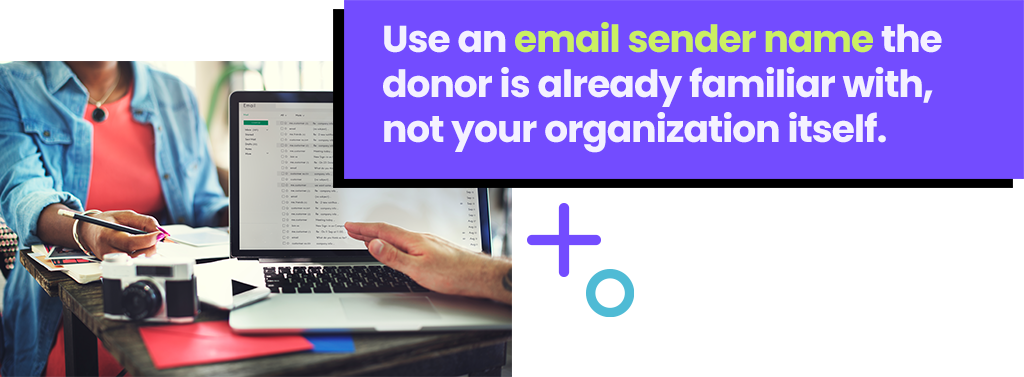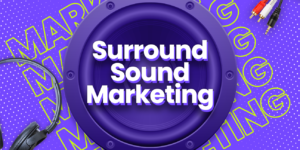You know an effective email strategy is an important part of achieving your goals and fulfilling your mission. And you can engage more donors, inspire action, and make a bigger impact when you use your nonprofit’s data to optimize email outreach.
But according to M+R Benchmarks, nonprofits only raise an average of $76 for every 1,000 fundraising emails they send.
So, there’s clearly some room for improvement! And as in most things fundraising, collecting strong donor data and knowing how to use it to improve your efforts is the key.
Does your data stink?
Before you draft your nonprofit’s next email, you need to make sure your database is in order and working for you, not against you.
As always, maintaining good data hygiene is critical!
The first step is to determine the deliverability of the email addresses in your database. Are a lot of your emails bouncing or being marked as spam? You can’t engage donors and get them excited to give if your emails aren’t reaching their inboxes.
So, you may need to clean up before you start using your data to optimize emails. Go into your records and see if you have another way to contact people who are not receiving your emails. Then, reach out and make sure the email address you have is still current.
Suppose you can’t get in touch with someone. It might be best to remove their record from your mailing list, especially if they’ve never donated to your organization. Sending emails to people who will never receive them makes your job as a fundraiser more difficult.
It will be much harder to use your data to optimize emails and better understand your results if your analytics are incomplete, inaccurate, or misleading.
So, make sure your database is in order before moving on to the next step.
LEARN MORE: Are you keeping good data hygiene?

Understanding donor preferences.
Every nonprofit is different. You’re reaching out to different donors with a different message about a different cause. And your donors may prefer different things in your email outreach than another organization’s audience.
What kind of story will resonate best? A sad story about someone in need, or a success story about what your organization and donors made possible?
Will they watch a special video message you embed into your next email? Or would they just prefer to read along and look at a few pictures?
If you don’t know the answers yet, that’s OK! A/B testing can help you collect the data you need to understand your audience’s preferences and adjust your outreach accordingly.
LEARN MORE: Take an extra step to accommodate donor preferences.

What is an A/B test?
In short, an A/B test is the process of sending separate versions of an email (or other communication) to two randomized groups, analyzing the results, and determining which version is most effective. Then, you send the winning version to the rest of your audience and use what you’ve learned in the future.
Nearly anything can be included as part of your A/B test. However, it is important only to test one element of your emails at a time.
Otherwise, you won’t know what change was the one that made the difference.
You can test different images, senders, subjects, and messages in your emails. We also recommend testing different calls-to-action so you can improve click rates and bring more users to your online donation page.
LEARN MORE: How an A/B test keeps your fundraising on track.

Meet donors where they’re at.
There’s a good chance your A/B testing will reveal your donors aren’t all looking for the same things in your emails. And this becomes truer and truer as your email list gets bigger.
But you can use the data you’ve gained to start segmenting your audience based on their preferences. This will help you send more relevant emails that inspire more supporters to make a difference.
There are limitless ways to segment your nonprofit’s audience.
For example, you can use your data to optimize emails with different ask strings, subject lines, examples of impact, images, and calls-to-action for specific segments of supporters.
And there are many other ways to group donors using the data you already have. You’re probably already doing it at the most basic level. For example, do current donors receive different emails than prospective donors? Then you’re segmenting your audiences!
So, what’s the most effective way for you to create audience groups and reach out with more relevant emails? We don’t know! As we mentioned earlier, every nonprofit is different.
So, you will need to dig into your own donor data to find out.
LEARN MORE: How to segment your nonprofit’s audience.
Always seek improvement.
It’s great if you find some strategies that work well for your donor base. But don’t get comfortable. You need to keep testing and gaining new data to optimize your email outreach. After all, continuous improvement should be the goal for every aspect of your fundraising.
And sometimes, a small tweak to an already effective strategy, like making a call-to-action button slightly larger, can have a huge impact.
But you can’t just throw something at a wall and hope it sticks! You need to use data to optimize your email outreach and get a better understanding of what will get your donors excited, engaged, and ready to make a difference.
Not sure where to start? Click here and we can walk you through it!









